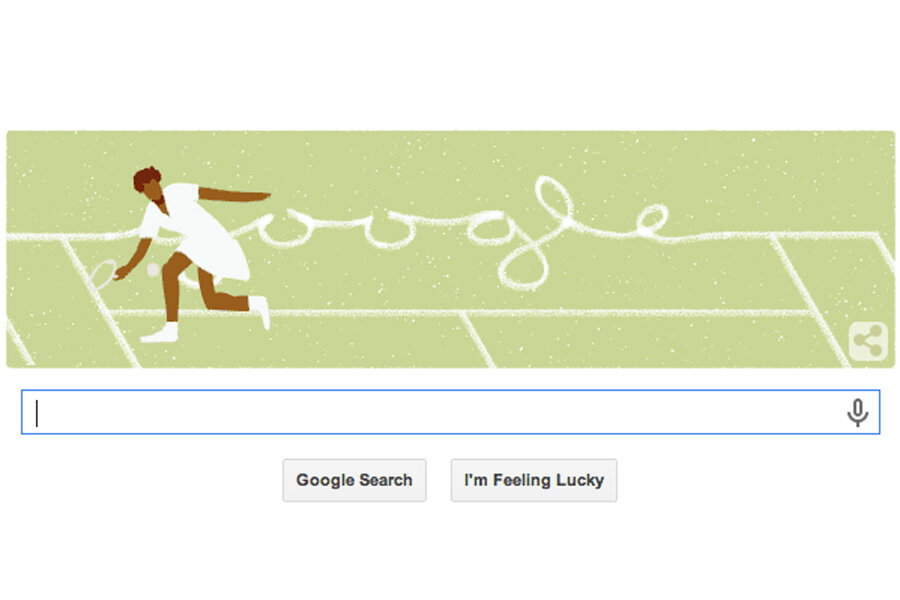Althea Gibson, trailblazing tennis legend, honored with Google Doodle
Loading...
Althea Gibson was part of a group of players who dominated women's tennis in the 1950s, a time when black athletes had few opportunities to play at all.
Before her, blacks were not welcome in major tournaments – in many cases, they were not even allowed through the front door of the tennis clubs that hosted the events. But Ms. Gibson and her black contemporaries opened up the sport, claiming victories not only for themselves, but for Arthur Ashe, Venus and Serena Williams, and the many black pros that followed.
Google honored her life and accomplishments with an animated doodle Monday, the 87th anniversary of her birth.
Born in 1927, Gibson grew up in New York City. Tennis was not her first love. She preferred ping pong. Her early table tennis victories caught the eye of musician Buddy Walker, who encouraged her trade in her paddle for a real racket. When she was 13, several of Gibson's neighbors pooled their money to pay for a junior membership for her at the Cosmopolitan Tennis Club in Harlem.
"Althea Gibson and her family literally had to wait until the courts were closed at night to learn the game," says NPR's Scott Simon in an interview with Biography. "In fact, Althea Gibson used to joke that that's what made her develop some of the shots that she did – because she had to kind of know where the lines were. She couldn't count on her eyes telling."
She took to the sport quickly. Within a year, she won her first tournament, an all-black state championship hosted by the American Tennis Association (ATA), a group designed to encourage and promote black athletes. Gibson went on to win two ATA national champions in the girl's division and, later, ten straight ATA national women's titles. Despite this impressive resume, Gibson was locked out of competing in major (white-only) tournaments.
Her big break came in 1950, when four-time US champion Alice Marble publicly chastised her sport for discriminating against top-level black players. "If Althea Gibson represents a challenge to the present crop of players, then it's only fair that they meet this challenge on the courts," Ms. Marble wrote in American Lawn Tennis magazine.
That year, Gibson became the first black player to compete in the US Nationals. Within a few years, she won a Grand Slam title at the French Open, and in 1957 captured Wimbledon.
By the 1960s, Gibson retired from tennis, but continued to claim a series of new athletic firsts. She took up golf and quickly became the first black woman to compete on a pro tour.
In addition to marking Gibson's birthday, Monday brings the opening of the US Open tennis championship in New York. The matches will be held in Arthur Ashe Stadium, named after the first black man to win the US Open in 1968. Mr. Ashe's incredible career – not to mention that of Venus Williams, who will compete in the US Open on Monday – may not have been possible without the work of Gibson.
"I have never regarded myself as a crusader," she wrote in her autobiography, "I Always Wanted to Be Somebody." "I don't consciously beat the drums for any cause, not even the negro in the United States."





